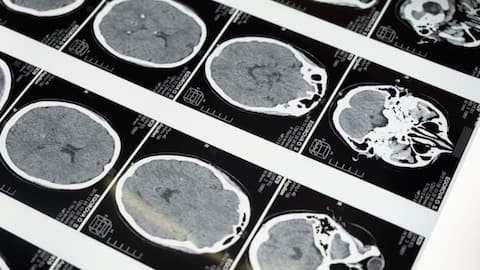Researchers reveal how your brain sparks in different love moments
What's the story
A groundbreaking study from Aalto University has pinpointed the exact locations in our brains where love is processed. Utilizing functional magnetic resonance imaging (fMRI), researchers observed brain activity in participants as they contemplated stories related to six types of love: romantic partners, friends, children, strangers, pets, and nature. This innovative research provides a detailed map of how different love situations stimulate various parts of the brain.
Study design
The methodology: Unraveling the brain's love pathways
The Aalto University researchers conducted the study by presenting participants with specific love-related narratives. Participants listened to a professional actor's rendition of each love story and were then asked to imagine each emotion for 10 seconds, according to a release from the researchers. This unique approach allowed scientists to observe how different types of love triggered distinct reactions within the brain.
Findings
Love's hierarchy: Parental and romantic love lead
The study, published in the journal Cerebral Cortex, revealed that love for one's children sparked the most intense brain activity, closely followed by romantic love. The researchers presented a statement to 55 parents in loving relationships that described seeing their newborn child for the first time. This scenario elicited significant responses within participants' brains.
Brain activation
The brain's love centers: A deep dive
Parttyli Rinne, who coordinated the study, noted that parental love uniquely activated the brain's reward system in the striatum when participants imagined it, a pattern not observed with other forms of love. Rinne further explained that the activation associated with love occurs in the basal ganglia, the midline of the forehead, the precuneus, and the temporoparietal junction at the sides of the back of the head. This research offers a detailed view of how the brain processes types of love.
Love variations
Love's spectrum: From strangers to nature
The study found that brain activity is influenced not only by the closeness of the object of love, but also by whether it is a human being, another species or nature. Compassionate love for strangers was less rewarding and caused less brain activation than love in close relationships. Interestingly, love of nature activated the reward system and visual areas of the brain, but not the social brain areas.
Pet owners
Pet love: A unique brain signature
The study also discovered a unique correlation between brain activity and pet ownership. Rinne mentioned that when examining brain activity related to love for pets, the brain areas linked to social behavior could statistically indicate whether a person is a pet owner. The research found that these areas are more activated in pet owners than in non-pet owners, providing a neurological signature of our bond with our furry friends.
